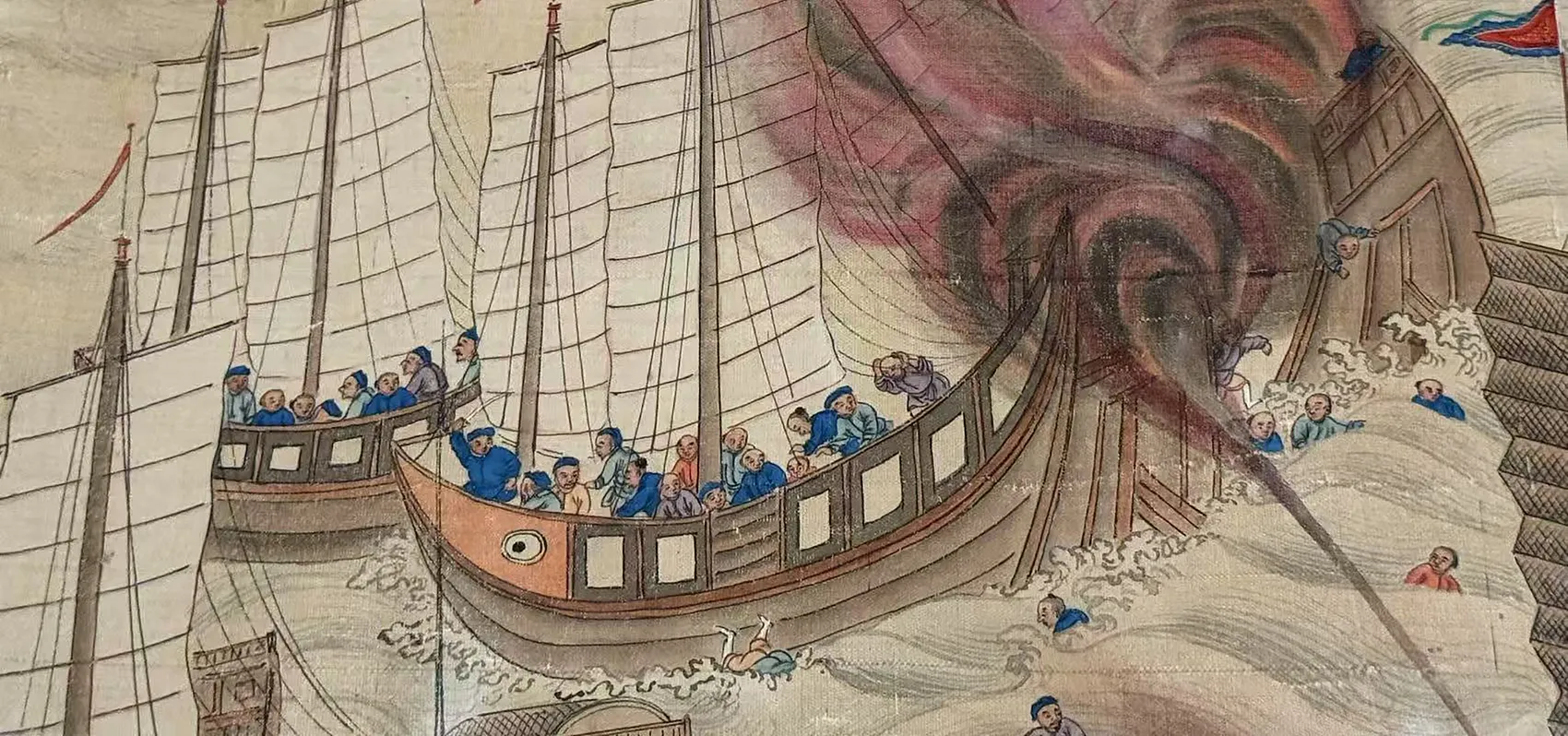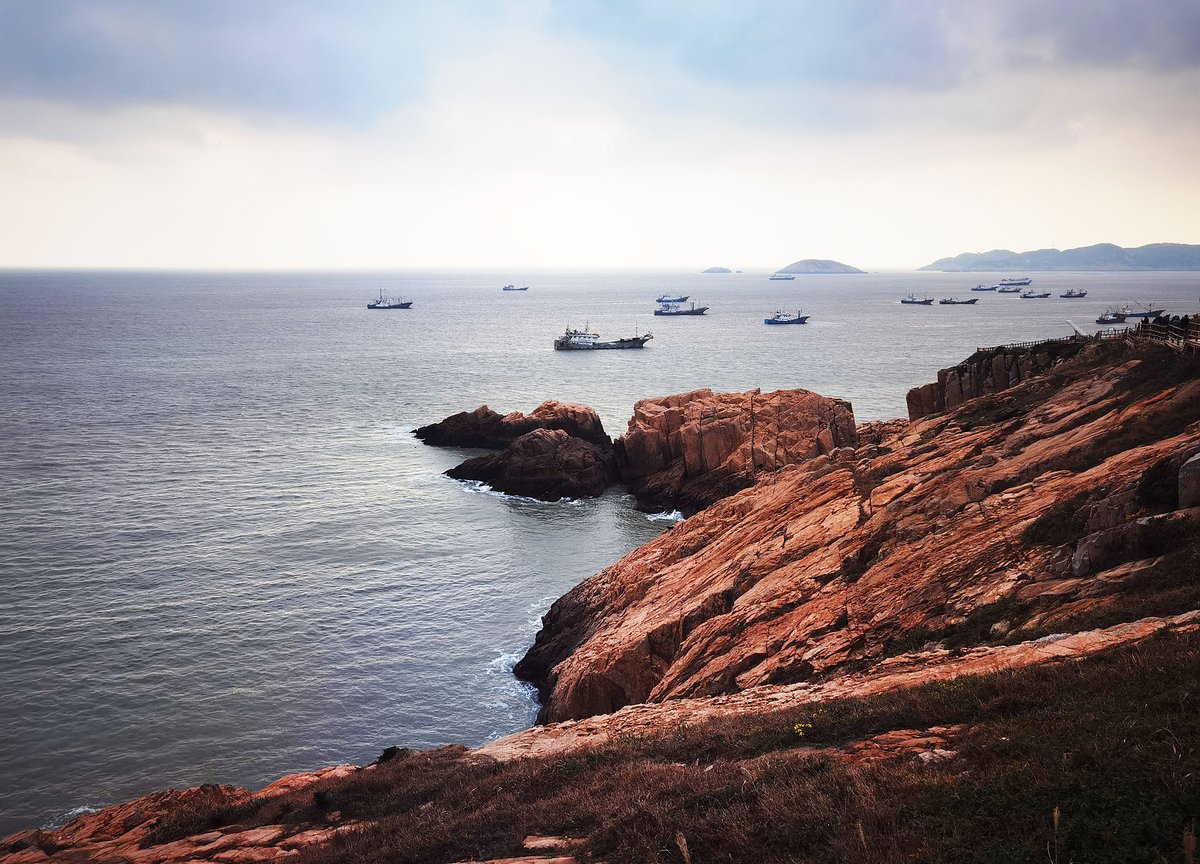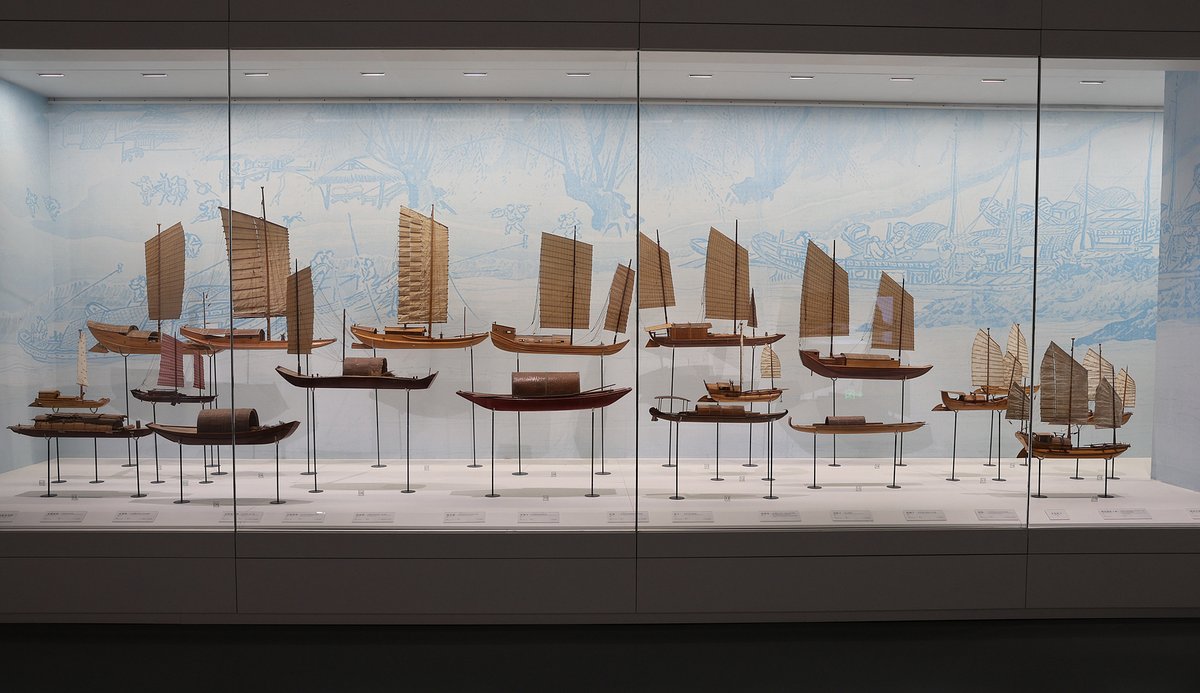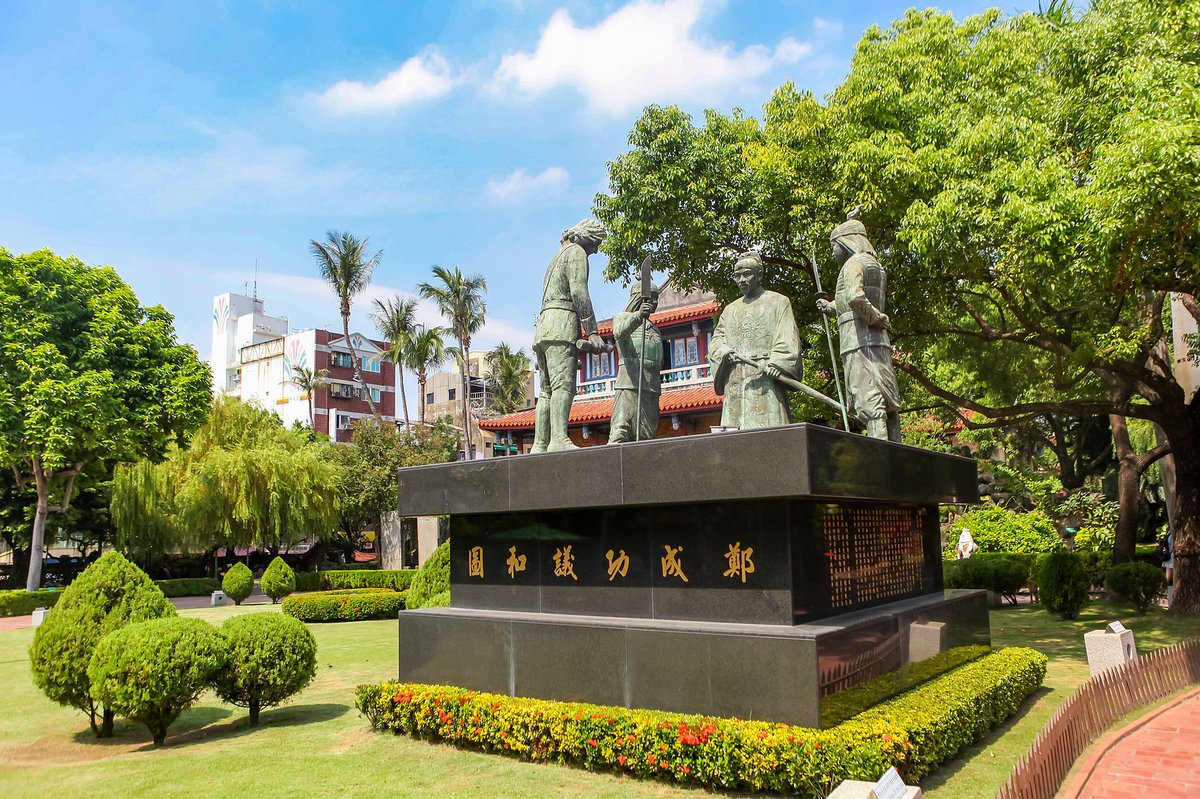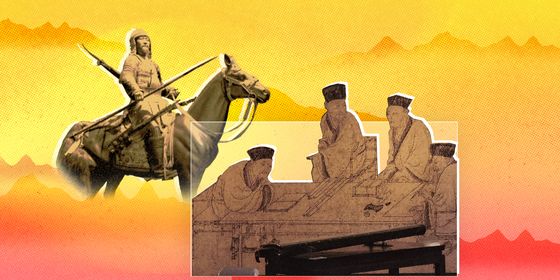Ancient seafarers who roamed China’s waters left behind countless legends: as leaders of popular uprisings, developers of maritime trade, and heroes against foreign invasion. Here are some notable Chinese “pirates” who deserve your attention.
When the word “pirate” is mentioned, the average Chinese person might think of Captain Jack Sparrow or Luffy from the manga series One Piece. As a nation with a deeply rooted agrarian tradition, the swashbuckling pirate is more of an imported concept, far removed from popular imagination. But make no mistake, pirates were active in China as early as 2,000 years ago.
Pirate rebels
The earliest record of pirates in Chinese historical documents appears in the Eastern Han dynasty (25 – 220). The Book of the Later Han (《后汉书》) details how Zhang Bolu (张伯路) raised a rebellion along the shores of Eastern China’s Shandong, leading his followers in defiance against the authorities, who refer to him as a “sea bandit (海贼).”
Zhang commanded more than 3,000 followers, who dressed in red scarves and robes and addressed him as “General.” His forces attacked and plundered nine coastal outposts. At the height of his power, Zhang wore a “five-ridged crown,” a ceremonial headpiece whose rank, according to Rites of the Han Court (《汉官仪》), surpassed that of Han court officials, since standard caps for high-ranking officials were limited to three ridges. The rebellion, however, only lasted two years. In 111, Zhang’s forces were crushed in a major imperial campaign, and he was killed.
In later dynasties, pirate rebellions periodically erupted. By the Eastern Jin dynasty (317 – 420), widespread political corruption amid a chaotic social environment culminated in an unprecedented large-scale maritime uprising. Led by the pirates Sun En (孙恩) and Lu Xun (卢循), the rebellion lasted 12 years, spanning both the East China Sea and South China Sea, a scale unparalleled in Chinese pirate history.
Learn about the rebels who shook ancient China:
- Rebels With a Cause: Five Famous Leaders of Ancient Uprisings
- Rags to Ruler: Five Chinese Emperors’ Rise from Humble Origins
- Meet the Chinese Woman Who Became History’s Greatest Pirate
Sun En, from present-day Shandong province, was born into a family that had long adhered to the Way of the Five Pecks of Rice, a Daoist movement with both political and religious significance. His uncle, Sun Tai (孙泰), was one of the leaders and enjoyed high prestige among the followers. In 398, Sun Tai launched an uprising against the court, but was suppressed and executed by the regents. Fleeing to sea with around 100 men, Sun En hid among the Zhoushan Islands off the eastern coast and began plotting his revenge.
At that time, the government’s conscription of tenant farmers had stirred popular discontent. Sun’s rebellion resonated deeply with the oppressed population, and his organization swelled rapidly to hundreds of thousands of people. Seizing the opportunity, Sun landed his forces, killed a magistrate, and took control of a commandery in present-day Zhejiang. Triumphant, he declared himself “General Pacifying the East,” established his administration, and called for the downfall of the Eastern Jin.
The court urgently dispatched two generals to crush the rebellion, but Sun proved relentless. In 400, he landed again, sweeping through two counties in succession and killing one general. Shocked and enraged, the court poured in reinforcements. Over the next two years, Sun launched a series of bold attacks, at one point pressing perilously close to the Eastern Jin capital, Jiankang (present-day Nanjing). Yet each advance was met by growing government forces, and famine and disease soon ravaged his army. Facing inevitable defeat, Sun ended his life by hurling himself into the sea.
Thereafter, his brother-in-law, Lu Xun, took command and continued the resistance from the sea. He sailed south to present-day Guangzhou on the coast of the South China Sea, far from the court’s reach, and seized the city while the government’s forces were tied up in northern conflicts. Proclaiming himself “General Pacifying the South,” he assumed control of the city. A few years later, Lu launched more military campaigns to the north, but he was ultimately pushed back and defeated at Longbian (east of present-day Hanoi, Vietnam), and, facing no escape, Lu Xun drowned himself.
The prolonged uprising left a lasting impact. Joined mainly by farmers and slaves from the southern Yangtze River Delta, the rebellion led by Sun and later Lu swept across much of Eastern Jin’s territory, greatly weakening the power of the aristocratic clans and contributing to the dynasty’s collapse in 420. At the same time, the general who defeated both Sun and Lu—Liu Yu (刘裕)—rose to prominence through suppressing the unrest and ultimately replaced the Eastern Jin emperor, founding his own dynasty, the Song (420 – 479) of the Southern Dynasties (420 – 589). But Sun’s name also endured, with later generations invoking “Sun En” as a metaphor for pirates.
Pirates who served their country
As an independent military force, pirates could sometimes influence state conflicts. In the 12th century, when China was divided between north and south, a pirate named Zhang Qing (张清) led his forces across the sea to strike directly at Jurchen-ruled Jin territory (1115 – 1234), aiming to halt their invasion of the Southern Song (1127 – 1279). The Jurchen troops were forced to retreat and defend their own backyard. According to The Records of the Great Jin (《大金国志》), Zhang raised the banner of the Southern Song army to rally support, sparking uprisings among locals who had once been Song subjects, as well as among prisoners of war held by the Jin. Despite this advantage, Zhang ultimately failed to capitalize on the situation and was forced to withdraw.
Beyond armed confrontation, pirates also played a crucial role in economic development. During the Yuan dynasty (1206 – 1368), the pirates Zhu Qing (朱清) and Zhang Xuan (张瑄) made significant contributions to launching maritime transport.
Originating from the Jiangsu and Zhejiang regions in the late Southern Song dynasty, Zhu and Zhang turned to salt smuggling and piracy due to poverty. Following the Song-Yuan transition, they accepted offers of amnesty from the Yuan court and were given official posts.
At that time, Dadu (present-day Beijing), the Yuan capital, relied on grain supplies from the southeast to feed its population and troops. The original grain transport route—a cumbersome combination of river and overland passages—was inefficient, costly, and constrained by shallow canals unable to accommodate large vessels.
The chancellor at the time proposed establishing a maritime transport route instead and assigned Zhu and Zhang to oversee the project, given their experience at sea. In 1282, Kublai Khan approved their plan and ordered them to conduct a trial shipment. Sailing from Liujia Port in present-day Jiangsu, they successfully transported over 40,000 dan (over 3,600 tons) of grain to present-day Tianjin, near the capital. As maritime shipments expanded, the Yuan court established a dedicated transport office. Zhu and Zhang were appointed to key positions for their pioneering achievement.
Masters of the seas
During the Ming dynasty (1368 – 1644), Chinese pirates sought to monopolize maritime trade, with attempts to establish autonomous maritime domains beyond the reach of the imperial court. Given that the Ming period coincided with the global Age of Discovery, numerous “trader-pirate” groups rose to power. Among them was one led by Wang Zhi (王直 or 汪直).
Wang was a native of Huizhou, a region known for producing shrewd merchants. However, his early attempts at inland commerce were frustrated. Consequently, he embarked on a maritime career, becoming an ambitious leader of armed merchant-pirates.
Wang’s legend is deeply intertwined with Japan. After his trading base at Shuangyu Port in Zhejiang was destroyed by authorities, he regrouped his remaining forces and sought opportunities in Japan. He traveled to Kyushu, where his powerful fleet and valuable cargo earned him the respect of local daimyos and allowed him to establish a secure trading post. Japanese merchants even entrusted him as a broker for trade with China, making him a pivotal commercial bridge between the two nations.
Wang’s ultimate goal was to secure freedom for maritime trade. He used force to eliminate rival pirate bands, in hopes that the court would approve the legalization of trade after he helped pacify the seas. However, the Ming government launched a surprise attack against him. This betrayal pushed him into open rebellion. He retreated to Japan, gathered strength, and returned with a larger fleet, capturing coastal cities and proclaiming himself “King of Huizhou.”
Wang never abandoned his goal of forcing the court to lift its maritime ban. Perhaps that’s what led to his downfall: When Ming dynasty official Hu Zongxian (胡宗宪) feigned an offer of amnesty to lure him ashore, Wang let his guard down. He traveled to Hangzhou in 1557 to negotiate, where he was promptly arrested. After two years of imprisonment, the once-dominant “King of Huizhou” was executed, bringing his tumultuous saga to a bloody end.
While Wang Zhi was ultimately crushed by the system he challenged, a later figure, Zheng Zhilong (郑芝龙), would demonstrate how maritime power can be transformative.
Zheng was born in 1604 in Quanzhou, Fujian. He spent his early years in Macao, Manila, and other ports, becoming fluent in Portuguese and Dutch, before entering the service of the prominent Fujian merchant-pirate Li Dan (李旦) in Japan, where he began to distinguish himself.
Later, Zheng returned to China following another merchant-pirate, Yan Siqi (颜思齐), and used the Beigang Port area in Taiwan as a base to begin trading between China and Japan. Following Li and Yan’s death in 1625, Zheng took command of both their fleets, and his influence expanded rapidly. While plundering government ships and wealthy coastal households, he also protected maritime trade routes, proving even more effective than the Ming authorities at suppressing harassment from other pirates, thereby winning the support of many merchants.
In 1628, after failed attempts to suppress him militarily, the Ming court decided to offer him amnesty. Zheng accepted, was granted an official title, and became a Ming military commander. With his new official status, Zheng eliminated many rival pirates, and in 1633, he decisively defeated a Dutch East India Company fleet at the Battle of Liaoluo Bay, solidifying his dominance over East Asian waters. All merchant ships sailing in the region were required to purchase safe-passage flags from Zheng’s organization.
Zheng’s most enduring legacy was his development of Taiwan. During the reign of Emperor Chongzhen, Fujian suffered successive droughts and widespread famine. Around 1628, Zheng organized a large-scale migration, recruiting tens of thousands of famine victims, providing them with money and cattle, and transporting them by sea to Taiwan to cultivate virgin land. This marked the first organized mass migration from the mainland.
During the Ming-Qing transition, Zheng defied his son Zheng Chenggong’s (郑成功) objections and surrendered to the Qing dynasty. The Qing court took him to Beijing under house arrest as a hostage in repeated, unsuccessful attempts to force his son to surrender. In 1661, Zheng Zhilong was executed. His son inherited his maritime empire and, in 1662, forced the surrender of Dutch Governor Frederick Coyett, reclaiming Taiwan after 38 years of colonial rule. To this day, Zheng Chenggong is revered as a national hero in China.
Afterwards, another iconic figure emerged during the Jiaqing reign of the Qing dynasty: Zheng Yi Sao (郑一嫂, literally “Wife of Zheng Yi”), China’s most famous female pirate. Her husband was a leader of the Red Flag Fleet operating in the waters of Guangdong. After Zheng Yi’s death, Zheng Yi Sao took control of the massive pirate coalition. At its peak, her confederation commanded hundreds of ships and tens of thousands of followers.
In 1809, Zheng Yi Sao’s forces clashed with armed British merchant ships near the Pearl River Delta, successfully expelling British ships from the inner river approaches to Guangzhou.
The power of Zheng Yi Sao’s organization ultimately forced the Qing government to shift its strategy from suppression to negotiation. She eventually accepted an offer of amnesty, leading her Red Flag Fleet in surrender to the Qing authorities.
Throughout history, Chinese pirates have been far more than simple outlaws. It’s hard to define such a complex product of unique historical circumstances. But their stories certainly remind us that China’s history isn’t confined to land; the deep blue sea has equally shaped the course of this country.





